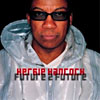
This Week: A tarnished Davis' jewel, Coleman's jigsaw puzzle and Hancock's dubious futurism
Miles Davis

The Complete In A Silent Way Sessions (Columbia/Legacy)
The haunting beauty of In A Silent Way's original 1969 release is in no way enhanced by this lavish three CD set. Rather Complete Sessions is a fetish, a loving and near obsessive study of the sessions that gave birth to SW and Davis' fusion transformation.
In proximate terms, there's BSW (before Silent Way): Davis' well-established quintets, acoustic instrumentation, and tunes recorded in one take. And then, ASW: an ever-changing ensemble of band mates, electronic instrumentation, and "rehearsals" edited to create amalgamated compositions.
While containing tunes released on recordings other than SW, Complete Sessions' true purpose is to capture the creation of SW's two 20-minute tone poems: the raw material, edits, and final result. As the liner notes tell it, each cut was constructed from approximately 20 minutes of studio tape, however much of that material is unused, the final tunes employing repeated tape segments, a novelty at the time.
The quality liner notes describing this process, a jazz aficionado's wet dream, readily upstages the musical simplicity of the final result. These extended cuts are studies in reserve, rhythmically driving to be sure, but introspective, as evidenced by Davis' contemplative lyricism on "Shhh/ Peaceful" and McLaughlin's unembellished reading of Zawinul's theme on "In a Silent Way."
SW was a beginning for Davis, a premonition of his more fully realized fusion manifesto, Bitches Brew. And SW band mates Shorter, McLaughlin, Corea, Hancock, Zawinul, Holland, and Williams would all become the entrepreneurs of the new fusion movement that resulted. However, SW was not merely a beginning for Davis and his men, but a fully realized jewel in itself, a peace offering before the electric storm.
—Jonathan B. Frey
Ornette Coleman

At the Golden Circle, Vols. 1 & 2 (RVG Editions, Blue Note)
For all of the critical fuss surrounding Coleman's earlier and later recordings, these live documents from 1965 stand quietly as a high water mark in the altoist's catalog. Given a new sonic immediacy by Rudy Van Gelder's remastering, this music remains specific to time and place (a Stockholm club), but it also resounds a challenging vibe today. Coleman's free, inventive playing gets part of the credit; the rest goes to bassist David Izenzon and drummer Charles Moffett, arguably Coleman's most stimulating rhythm section.
Having been liberated from chord changes for some years, Coleman solos with confidence and command. He explores a variety of thematic areas: uptempo burners ("Faces and Places," "The Riddle"), rubato ballads ("Dawn," "Morning Song"), and sing-songy primitivism ("Dee Dee"). The themes serve as emotional guardrails and little else, as the trio changes tactical directions at will, either in unison or at odds with each other. Izenzon and Moffett alternately support and disrupt; their interplay shifts the jigsaw pieces of "Antiques" and drives Coleman's entry-level trumpet and violin in the energetic "Snowflakes and Sunshine."
Sometimes the music approaches chaos (or tedium—"European Echoes" is a perpetual dead-end), but such is the risk Coleman has always been willing to take. The Golden Circle volumes hit more than they miss, and they are never less than interesting. Coleman's is an insular musical world, to be sure; on this occasion, it is accessible and teems with life.
—Chris Mitchell
Herbie Hancock

Future 2 Future (Transparent Music)
Perhaps it's the inaccurate title that troubles this recording the most. That and the lyrics, their pomposity. It simply won't do.
F2F is another collaboration between Hancock and bassist Bill Laswell, partners in that 1983 homage to jazzercise, Future Shock (recall the hit "Rockit"?). While the latter was sort of fun in a mind numbing way, F2F never rises above its omnipresent self-consciousness, its patronizing tone.
F2F's lyrics inform us that "wisdom is the future," that "the most exciting of the new sounds that have [sic] been added to American music in the past few years" is scratch, that we "dreamt" drummer Tony Williams, purportedly a prophetic son who comes only once every millennium. Oh, and also that the producers are providing us "artistically recorded music that is intensely interesting." Yikes!
Even taken as irony, such banalities seriously compromise the music, which is not particularly new (or futuristic), but does provide a few moments entertainment. On "Black Gravity" Hancock's spacey keyboards captivate, drifting above a quilt of programmed percussion and slapped bass. And the sampled Williams drum on the tune "Tony Williams" is stunning, his inventive stops, starts, and driving recapitulations an auspicious contrast to the repetitive beats elsewhere.
Wayne Shorter delivers his characteristic elisions on several cuts, breathing much needed life into the dangerously near dead "Be Still."
Certainly there's no future here. There's lots of decades-old scratch, actually an anachronism amidst the techno influences. And there's lots of pleasant noises, but the absence of actually interesting compositions does not go unnoticed.
—Jonathan B. Frey

March 14, 2002 * Vol. 12, No. 11
© 2002 Metro Pulse
|